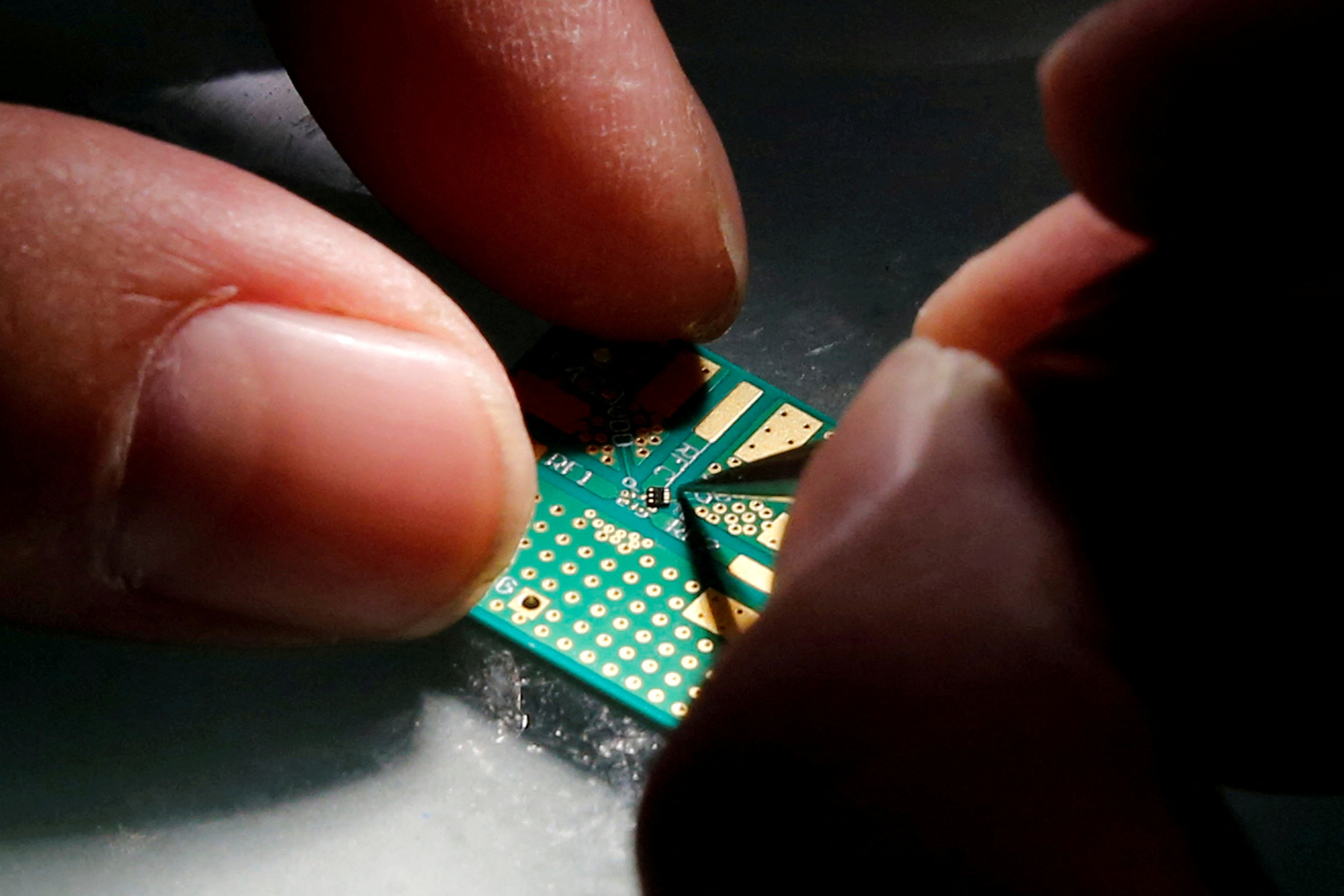New Investigation Reveals American and Allied Companies Boosted the CCP’s Semiconductor Industry, Fueled the PRC’s Military Ambitions and Human Rights Abuses – Select Committee on the CCP | (.gov)

Report on Semiconductor Equipment Sales to the PRC and Implications for Sustainable Development Goals
Executive Summary
An investigation by the Select Committee on the CCP reveals that leading semiconductor manufacturing equipment (SME) companies from the United States, the Netherlands, and Japan have engaged in substantial sales to entities in the People’s Republic of China (PRC), including state-owned and military-affiliated enterprises. These commercial activities present significant challenges to the achievement of several Sustainable Development Goals (SDGs), particularly SDG 16 (Peace, Justice and Strong Institutions), by fueling military modernization and enabling human rights violations. The findings also raise concerns regarding SDG 8 (Decent Work and Economic Growth), SDG 9 (Industry, Innovation and Infrastructure), and SDG 17 (Partnerships for the Goals), highlighting a conflict between short-term corporate revenue and long-term global stability and responsible innovation.
Economic Growth vs. Sustainable Practices: An Analysis of SDG 8
The investigation highlights a critical tension within SDG 8, which promotes sustained, inclusive, and sustainable economic growth. While several multinational corporations have seen significant revenue growth from the PRC market, the nature of these sales compromises the sustainability aspect of this goal. The reliance on a market that poses security and ethical risks undermines the principle of responsible economic development.
- Lam Research: Received 42% of its revenue from the PRC.
- Tokyo Electron (TEL): Received 44% of its revenue from the PRC.
- KLA: Received 41% of its revenue from the PRC.
- ASML: Received 36% of its revenue from the PRC.
- Applied Materials: Received 36% of its revenue from the PRC.
Sales to PRC state-owned enterprises (SOEs) grew from $9.5 billion in 2022 to $26.2 billion by 2024, indicating that corporate economic growth is increasingly tied to state-directed industrial policies that conflict with global peace and security objectives.
Threats to SDG 16: Peace, Justice and Strong Institutions
The report’s central findings directly challenge the targets of SDG 16, which aims to promote peaceful and inclusive societies. The transfer of advanced SME to PRC entities, including those with military connections, undermines global peace and security.
Identified Threats to Global Stability and Human Rights:
- Military Applications: The equipment enables the production of advanced semiconductors for PLA weapons systems and “intelligentized” warfare, directly contravening the goal of reducing violence and promoting peace.
- Economic Coercion: The PRC’s pursuit of a vertically integrated chip industry could create economic leverage, undermining the stable and just international order envisioned by SDG 16.
- Human Rights Violations: Advanced computing capabilities, built with this technology, are utilized by the CCP for domestic human rights abuses and the global promotion of digital authoritarianism, opposing the SDG 16 target of protecting fundamental freedoms.
Challenges for Innovation and Global Partnerships (SDG 9 & SDG 17)
The investigation underscores the need for responsible management of technology and innovation (SDG 9) and robust international cooperation (SDG 17). The current export practices represent a failure to ensure that technological advancements contribute positively to sustainable development. The PRC’s stockpiling of SME indicates a strategic effort to achieve technological dominance that could destabilize global supply chains and international relations. Furthermore, the report notes that as U.S. export controls were implemented, Dutch and Japanese firms increased their revenues from PRC entities, highlighting a lack of allied policy alignment and weakening the effectiveness of global partnerships (SDG 17) in addressing shared security challenges.
Policy Recommendations for Alignment with SDGs
To mitigate these risks and better align industry practices with the Sustainable Development Goals, the investigation proposes several institutional and policy reforms. These recommendations focus on strengthening international cooperation and regulatory frameworks to ensure that economic activities support, rather than undermine, global peace, justice, and sustainable innovation.
- Strengthen Global Partnerships (SDG 17): Align export controls among the U.S., the Netherlands, and Japan to create a unified and effective regulatory environment.
- Build Stronger Institutions (SDG 16): Expand country-wide controls for the PRC, widen the list of restricted military-linked entities, and restrict the export of critical SME components.
- Enhance Justice and Accountability (SDG 16): Create a new whistleblower program for export control violations and increase resources for enforcement agencies.
- Foster Responsible Innovation (SDG 9): Ensure U.S. and allied leadership in SME through improved government-industry communication and investment in talent, thereby steering innovation towards sustainable and secure outcomes.
Analysis of Sustainable Development Goals in the Article
1. Which SDGs are addressed or connected to the issues highlighted in the article?
-
SDG 8: Decent Work and Economic Growth
The article connects to SDG 8 through its focus on economic security and competition in the high-value semiconductor industry. The concern that China could gain a “dominant chip manufacturing position” and use it as “leverage against America’s national security interests” directly relates to the goal of sustaining economic growth and maintaining industrial competitiveness.
-
SDG 9: Industry, Innovation, and Infrastructure
This goal is central to the article. The entire discussion revolves around the semiconductor manufacturing equipment (SME) industry, a critical component of modern technological infrastructure. The article emphasizes the need for the U.S. and its allies to “remain the world’s leading innovators in SME” and preserve their “crucial chokepoint” in this technology, which aligns directly with the goal’s focus on fostering innovation and upgrading industrial technological capabilities.
-
SDG 16: Peace, Justice, and Strong Institutions
SDG 16 is strongly relevant due to the article’s emphasis on national security, military threats, and human rights. It explicitly states that the exported technology is used for “PLA weapons systems that could be used to kill American and allied servicemembers” and to “violate human rights domestically.” Furthermore, the recommendations to strengthen export controls, create a whistleblower program, and increase resources for enforcement agencies like the Bureau of Industry and Security (BIS) are about building effective and accountable institutions to prevent conflict and injustice.
-
SDG 17: Partnerships for the Goals
The article highlights the necessity of international cooperation, a core principle of SDG 17. The investigation calls for aligning export controls between the United States, the Netherlands, and Japan. The problem identified—that Dutch and Japanese firms increased sales as the U.S. imposed controls—underscores the need for a coherent, multilateral partnership among allied nations to address the shared security and economic challenges.
2. What specific targets under those SDGs can be identified based on the article’s content?
-
Under SDG 8: Decent Work and Economic Growth
- Target 8.2: “Achieve higher levels of economic productivity through diversification, technological upgrading and innovation…” The article’s recommendation to “ensure U.S. and allied innovation and leadership in SME” and to “double down on our success” directly supports this target by focusing on maintaining a competitive edge through technological innovation in a key industrial sector.
-
Under SDG 9: Industry, Innovation, and Infrastructure
- Target 9.5: “Enhance scientific research, upgrade the technological capabilities of industrial sectors… and encourage innovation.” The article’s core theme is the competition over technological capabilities in the semiconductor industry. The warning against squandering the “crucial chokepoint” the U.S. and its allies have over China is fundamentally about controlling the diffusion of advanced technology to maintain an innovative lead, which is the essence of this target.
-
Under SDG 16: Peace, Justice, and Strong Institutions
- Target 16.1: “Significantly reduce all forms of violence and related death rates everywhere.” The article directly links the sale of SME to China’s military modernization, including the development of “PLA weapons systems that could be used to kill American and allied servicemembers.” Actions to restrict these sales are aimed at preventing future conflict and violence.
- Target 16.a: “Strengthen relevant national institutions… to prevent violence and combat… crime.” The recommendations to increase “resources and personnel for BIS and the State Department to improve enforcement,” create a “new whistleblower export control program,” and expand “country-wide controls” are all measures to strengthen national institutions responsible for enforcing laws that protect national security.
-
Under SDG 17: Partnerships for the Goals
- Target 17.16: “Enhance the global partnership for sustainable development, complemented by multi-stakeholder partnerships…” The call to “align allied, such as Dutch and Japanese, exports controls with U.S. restrictions” is a direct appeal for a stronger global partnership among specific governments to achieve a common policy goal.
- Target 17.17: “Encourage and promote effective public, public-private… partnerships.” The investigation itself, a public process examining the actions of private companies (ASML, TEL, Lam Research), and the recommendation to improve “government-industry communication” exemplify the public-private partnership dynamic needed to address the issue.
3. Are there any indicators mentioned or implied in the article that can be used to measure progress towards the identified targets?
-
For SDG 8 & 9 (Economic Growth & Innovation)
- Financial Dependence on a Single Market: The article provides specific figures that can serve as indicators, such as “in 2024, TEL received 44% of its revenue from China, Lam Research received 42%, KLA received 41%.” A reduction in these percentages could indicate a successful diversification away from a market deemed a national security risk.
- Value of Sales to State-Owned Enterprises (SOEs): The article quantifies sales to PRC SOEs, noting they grew from “$9.5 billion… in 2022” to “$26.2 billion, by 2024.” Tracking this value would be a direct indicator of the flow of technology to state-controlled entities.
-
For SDG 16 (Peace, Justice, & Strong Institutions)
- Sales to Restricted or Military-Linked Entities: The article states that “five companies identified by the U.S. government as posing serious national security concerns are top customers of the SME makers.” An indicator of progress would be the reduction or elimination of sales to entities on restricted lists or those with known military connections.
- Institutional Resources: The recommendation to increase “resources and personnel for BIS and the State Department” implies that budget allocations and staffing levels for these enforcement bodies can be used as an indicator of institutional strengthening.
-
For SDG 17 (Partnerships)
- Policy Alignment Among Allies: The primary recommendation is to “align allied, such as Dutch and Japanese, exports controls with U.S. restrictions.” An indicator of progress would be the formal adoption of harmonized export control regulations and enforcement policies by the Netherlands and Japan.
4. Summary Table of SDGs, Targets, and Indicators
| SDGs | Targets | Indicators (Implied or Mentioned in the Article) |
|---|---|---|
| SDG 8: Decent Work and Economic Growth | 8.2: Achieve higher levels of economic productivity through technological upgrading and innovation. |
|
| SDG 9: Industry, Innovation, and Infrastructure | 9.5: Enhance scientific research and upgrade the technological capabilities of industrial sectors. |
|
| SDG 16: Peace, Justice, and Strong Institutions |
16.1: Significantly reduce all forms of violence. 16.a: Strengthen relevant national institutions. |
|
| SDG 17: Partnerships for the Goals |
17.16: Enhance the global partnership. 17.17: Encourage effective public-private partnerships. |
|
Source: selectcommitteeontheccp.house.gov

What is Your Reaction?
 Like
0
Like
0
 Dislike
0
Dislike
0
 Love
0
Love
0
 Funny
0
Funny
0
 Angry
0
Angry
0
 Sad
0
Sad
0
 Wow
0
Wow
0



















































.jpg.webp?itok=0ZsAnae9#)

























